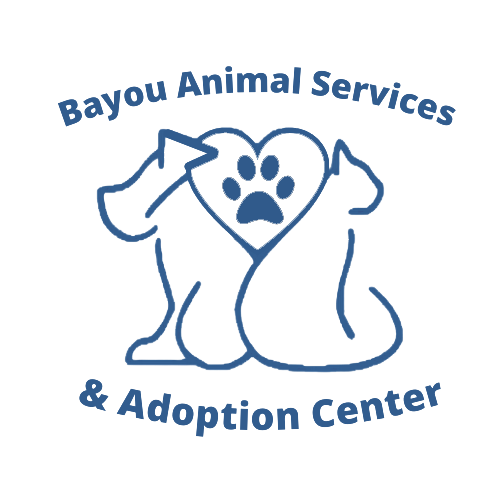
What to do when you find kittens?
If you do not plan to raise them, call your local animal control office. Keep the kittens warm and dry until the Animal Control Officer arrives!
Found Kittens, Now what….?
Happen to hear some faint meows in your nearby bushes? Think you might have come upon discovery of an abandoned kitten or litter of kittens? Well more often than not mama cat is not too far away and has not actually discarded her babies. Here are some suggestions on what your next step should be:
Do not disturb the kittens
It is best to 1st observe from a distance for a few hours to determine if mom is returning to her nest. The mother cat may be out searching for food, taking a break, or even hiding from you. If you see kittens and no mom, wait a few hours before trying to rescue them. The kittens have a better chance of survival with their mom. If mom returns, the best thing you can do is place some fresh cat food and water out for her. It is best not to continue to check on them more than once a day as not to disturb the nest.
Friendly mom returns
If possible, bring the mom and the kittens indoors isolated from your household pets. Provide a nice area for them with a bed, a clean litter box, fresh water, and cat food. Kittens can be weaned when they begin eating solid foods at approximately 4-6 weeks old; offer them wet food mixed with water at 4 weeks. When the kittens are fully weaned from the mom, the mom should be spayed, and then either adopted out or returned outside. The kittens should be fixed and adopted out around 8-10 weeks of age. Handle the kittens frequently after 5 weeks old to help with socialization. Consult a veterinarian immediately if the kittens or mom show any signs of illness, injury, or distress.
Feral mom returns, do not fear
Leave the family outside, and provide food, water, and shelter. The mother will likely move the kittens, do not worry. If she knows this is a safe place with a stable food source, she’ll return with them. If you are able to commit, the kittens should be taken away from their mom when they’re able to eat on their own (about 4-5 weeks old). When you bring them inside, handle them often to get them used to human socialization. The kittens should be fixed and adopted out around 8-10 weeks of age. If you cannot foster and socialize the kittens, leave the kittens outside! Don’t socialize a kitten that you cannot place; they will learn survival skills from their mother that will give them their best chance at outdoor survival as a feral cat.
It’s been a few hours, with no mom in sight.
The kittens appear to be abandoned, what can you do to help?
Once you remove the babies, you must keep them at an appropriate body temperature. Using a box with clean, soft towels, and warming bottles make a nest and place the kittens in the box. Keep them away from drafts and out of humidity. They need a room that stays close to 90 degrees for the first two weeks of age, then the temperature can be lowered to 80 degrees. Unweaned kittens need round-the-clock care and monitoring.
The kittens will need to be bottle-fed with milk replacer every 2-3 hours (including overnight) and kept warm and dry.
Want to raise them?
If you do not plan to raise them, call your local animal control office. Keep the kittens warm and dry until the Animal Control Officer arrives!
If you decide to raise them..
1 – 4 weeks old: will need to be bottle-fed kitten formula.
5 weeks and older: can be offered canned food for KITTENS ONLY but they may still need to be bottle-fed. Canned food must be creamy texture with no chunky food or big pieces. Please try to find the best quality canned kitten food from the pet store.
If you, a neighbor, friend, or relative are able to take on this responsibility, you can give these abandoned kittens a shot at life! If your schedule does not allow for it, there may be resources in the community to help. Be aware that most local shelters do not have the staff to feed kittens around the clock and mortality rates in these kittens are very high.
FEEDING INSTRUCTIONS:
DO NOT FEED COW’S MILK, SOY, or RICE MILK. Milk replacement (kitten formula) and nursing kits can be purchased at pet stores. Follow the instructions on the packaging for cleaning and preparing the bottles, nipples, and for the appropriate mixing ratio of the milk replacement. Do not heat the liquid directly, rather place the bottle in a pan of hot water to warm it, and test on your own wrist. Wash your hands before and after handling the formula and feeding the kittens. Do not feed kittens on their backs. Place them on their stomachs and gently lift their chins. Rub the nipple back and forth across the lips and gums until the kitten begins to taste the formula and latches on. Remember to tilt the bottle up so that the kitten is not sucking in air. An eye dropper may be necessary for the first week or two. Every third feeding, offer some water in the bottle to start. Kittens will usually stop suckling when they are full. Do not feed too fast or force the formula. Kittens eating formula need to be burped. This is performed by keeping them on their stomach and either placing them on your lap or on your shoulder and then gently patting their backs.
FEEDING SCHEDULE:
The label on the container of kitten formula you purchased should indicate the recommended amount to feed a kitten according to body weight. If a kitten cries, she is either cold or hungry. A contented kitten sleeps quietly. YOU CANNOT MISS A FEEDING IN NEWBORN KITTENS!
Newborns up to 1 week old – feed every 2 hours day and night (YES, you need to wake up at night)
1 – 2 weeks old – feed every 3 to 4 hours day and night
3 weeks old – feed every 4 to 5 hours day and night
4 weeks old – feed every 5 to 6 hours day and night
If you do not feed a baby kitten on schedule it can go into hypoglycemic shock and die. You MUST feed the kitten on time and all throughout the night.
When the kitten is about four weeks old, you can begin weaning the kitten with a high-quality kitten canned food mixed with KMR or Just Born Formula. Begin by adding just 1/2 teaspoon into the formula and warm it up. You will need another baby bottle for this and it is important to make a BIGGER hole in the bottle for the thicker formula to come out. Remember, it must be able to flow slowly out of the bottle if held upside down. Sometimes the formula gets stuck in the nipple so make sure to stir the formula well before putting in the bottle and shake the bottle often.
After about 4-5 weeks the kittens should be weaned and they can be fed a high-quality kitten canned food in a very flat or shallow dish.
Make sure they have clean water to drink at all times. They should also be able to use the litter box by this time. Use clay litter only. Do not use clumpable or scoopable litter for baby kittens. It will get in their paws and they will get sick if they lick it off.
Once the kittens are about 8-10 weeks they are ready for adoption after you have done ALL of their recommended medical work and they are spayed/neutered.
Until the kittens can urinate and defecate on their own (about 3 weeks of age), they must be stimulated to relieve themselves. Wet a cotton ball with warm water, and gently rub the anal and genital area. They will begin to go within 1-2 minutes. It’s very important to do this after each meal. The urine should be a pale yellow or clear. If it is darker, the kitten may need more formula. The stool should be a pale to dark brown and partially formed. Too firm of a stool indicates dehydration or not enough formula.
If the kitten needs more formula, increase the number of feedings rather than the amount at each meal. Too much food causes bloating, gas, regurgitation, and sometimes aspiration into the lungs. Diarrhea can be the result of a change in diet, too much formula, or an intestinal parasite. Green stool indicates an infection. We do not advocate medicating or treating animals for parasites (deworming or giving antibiotics) without a diagnosis and veterinary instruction. If you suspect an intestinal condition, seek veterinary attention. Kittens can become dehydrated or septic very quickly, and the condition can lead to death. Remember to clean their faces and rear ends after each feeding.
Supplies you will need for newborns and young kittens:
Kitten formula such as Just Born or KMR (found at local pet stores). The liquid formula is best to use if you are not sure what to do.
Feeding bottles and several nipples (found at pet stores with kitten formula).
Eye dropper or syringe (without needle) in case the kitten will not eat from the bottle.
Several bath towels for bedding and cleaning kittens.
Kitchen food scale for weighing kittens (optional).
Digital rectal thermometer (kittens that are 2 weeks old have a normal temperature is between 100 and 102 degrees Fahrenheit – newborns are about 97 degrees.)
Have Emergency Veterinarian or Veterinary Clinic number on-hand.
Try to verify the age of the kittens.
This is important because you don’t want to take a nursing kitten away from their mom or leave a kitten with their feral mom too long if you want to socialize them.
Under one week: Eyes shut, ears flat to head, skin looks pinkish. Part of umbilical cord may still be attached.
1 week-10 days: Eyes beginning to open, ears still flat. A kitten this age is smaller than your hand.
3 weeks: Eyes are fully open, ears are erect, and teeth are visible. Kittens this age are just starting to walk and will be very wobbly.
4-5 weeks: Eyes have changed from blue to another color and/or kittens have begun to pounce, leap, and are more mobile. Kittens this age will begin to eat gruel or canned food.
Adopting out the kittens.
The final step. Successful socialization is the most important part of the process, so make sure you teach them to trust and like humans as early as you are able! Please spay and neuter them before you adopt them out (kittens can be fixed at as early as 8-10 weeks of age), they will not only be more attractive to adopters, but it will also help prevent this cycle from happening all over again. Once they are fixed, advertise liberally! Use social networking sites, tells friends, relatives, colleagues and acquaintances, and get them adopted out as early as you can! The older the kittens get, the harder it will be to find them homes.

